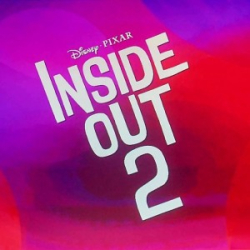As someone who deeply cherished the original Inside Out, I approached Inside Out 2 with a mixture of excitement and trepidation. Pixar's first foray into Riley's mind provided a masterful blend of humor, emotion, and insightful commentary on the human experience. Could its sequel successfully navigate the complexities of adolescence? Let's delve into this emotional rollercoaster and see if it lives up to its predecessor.
The moment I heard the familiar tones of Joy and her cohort, I felt a wave of nostalgia. However, it quickly became evident that much had changed in Riley's world and within the control room of her emotions. Now 13, Riley faces the tumultuous period of early teenagehood, which brings in an array of new characters to the mix. This transition is handled with both humor and sensitivity, painting a vivid picture of the emotional upheaval that defines these years.
The Evolution of Riley
From the moment we reconnect with Riley, it’s clear she's no longer the carefree child we remember. She bears the hallmark signs of adolescence - uncertainty, curiosity, and the subtle yet persistent search for identity. There’s a relatable authenticity to her depiction, making each of her struggles and triumphs resonate deeply with viewers of all ages.
Riley’s narrative arc is heavily influenced by her upcoming transition to high school and her involvement in an ice hockey camp. This significant life change mirrors many of the challenges real teenagers face, allowing for a nuanced exploration of growth and the fear of the unknown. The lifelike representation of her journey strengthens the film’s relatability and impact.
New Emotions, New Dynamics
Inside Riley’s mind, the familiar control center is bustling with new faces, each representing an emotion crucial to her teen years. Anxiety, voiced by Maya Hawke, and Ennui, portrayed by Adèle Exarchopoulos, immediately stand out. Their interplay with the existing emotions provides a fresh dynamic and introduces humor amidst the chaos.
These new emotions effectively capture the essence of adolescence, where every minor decision can feel like a monumental crisis. The film skillfully illustrates how these newcomers clash and collaborate with the original quintet, highlighting the turbulence of teenage emotional states. The beauty of Inside Out 2 lies in its ability to convey these complexities without overwhelming the audience.
Aesthetics and Animation Excellence
Visually, Inside Out 2 is nothing short of spectacular. The vivid, colorful landscapes within Riley’s mind continue to captivate, now enhanced with new settings that represent her evolving emotional world. Each “personality island” and memory sphere is brimming with detail, showcasing Pixar’s unparalleled expertise in animation.
The animation's quality is matched by the film’s innovative representation of emotions and memory. Subtle changes in textures and colors reflect Riley’s shifting mental state, creating a visually rich and narratively cohesive experience. The seamless blend of animation and storytelling ensures that the emotional depth is consistently conveyed through stunning visuals.
Voices that Bring Emotions to Life
The voice acting in Inside Out 2 is nothing short of stellar. Amy Poehler returns as Joy, bringing her signature charisma that instantly uplifts the narrative. However, this time, Joy faces new challenges, exemplifying a nuanced performance that balances enthusiasm with a stark realization about growing up.
Maya Hawke’s Anxiety introduces a new layer of complexity, her voice embodying the pervasive fear and uncertainty that often accompanies adolescence. Adèle Exarchopoulos’ Ennui is particularly humorous, offering a deadpan counterpoint to the more energetic emotions. The newcomers seamlessly integrate with the original cast, delivering a harmonious yet complex auditory experience.
Humor with Heart
Inside Out 2 doesn’t shy away from humor, skillfully weaving it through the fabric of its narrative. Whether it’s the hilariously exaggerated emotional responses or the interactions between the various emotions, there’s always a moment to bring a smile to your face.
However, the humor never detracts from the film’s more serious undertones. Instead, it enhances the narrative by providing moments of levity amidst the emotional turmoil. This balance ensures that the film remains engaging and accessible without undermining its poignant themes.
Exploration of Adolescent Themes
The film delves deep into the heart of what it means to be a teenager. From friendships strained by the pressures of growing up to the intense need for identity and belonging, the themes are rich and varied. Riley’s journey embodies the universal struggles of adolescence, making her story both personal and relatable.
The depiction of Riley’s falling out with her friends and her subsequent attempts to fit in with a new crowd is particularly striking. It captures the essence of those early teen years, where belonging feels like a matter of life and death. The portrayal is both authentic and moving, a testament to the film’s commitment to a genuine representation of adolescence.
The Emotional Core
At its heart, Inside Out 2 remains a deeply emotional experience. Joy’s realization about the nature of growing up is a powerful moment, showcasing the nuanced understanding of happiness that the film brings to light. This is complemented by the other emotions, each bringing their own perspective to the narrative.
The emotional core is further strengthened by the way the film handles memory and nostalgia. The concept of “Mount Crushmore,” with its indistinct faces, poignantly captures the transient yet impactful nature of adolescent crushes. This reflection on memory serves as a reminder of the ephemeral yet meaningful experiences that shape us.
Gaps and Omissions
Despite its strengths, Inside Out 2 does have its shortcomings. One notable omission is the exploration of love as a dominant teen emotion. While the film hints at it through “Mount Crushmore,” it shies away from delving deeper into this crucial aspect of teenage life.
It’s possible that the filmmakers chose to avoid this topic to maintain a broader appeal, yet its absence feels palpable. Considering the central role that romantic feelings play in adolescence, a more thorough exploration could have added an additional layer of authenticity to the narrative.
The Soundtrack’s Role
Music continues to play a pivotal role in setting the tone and driving the emotional beats of the film. The soundtrack is both evocative and whimsical, matching the film's shifting moods and enhancing its thematic depth. The music underscores the narrative without overpowering it.
There are moments where the soundtrack evokes a strong sense of nostalgia, reminiscent of Riley's simpler childhood days. These instances create a poignant contrast with her current struggles, deepening the audience's connection to her journey. Overall, the soundtrack is a crucial component that enriches the cinematic experience.
A Conclusion with Hope
Inside Out 2, while not reaching the same pinnacle of perfection as its predecessor, offers a heartfelt and humorous exploration of the tumultuous teenage years. It skillfully balances lighthearted moments with deeper emotional insights, making it a worthy successor in the franchise.
The film concludes on a hopeful note, suggesting that growing up involves embracing new emotions and learning to navigate them. This message resonates deeply, offering both a realistic and optimistic outlook on adolescence. As we say goodbye to Riley anew, we are left with the anticipation of what further adventures and emotional complexities might await in her journey to adulthood. Perhaps an Inside Out 3 focusing on her college years will provide the next chapter in this captivating story.
Screenshots
To download the app, you will get links to the Official Website and/or official digital markets.











